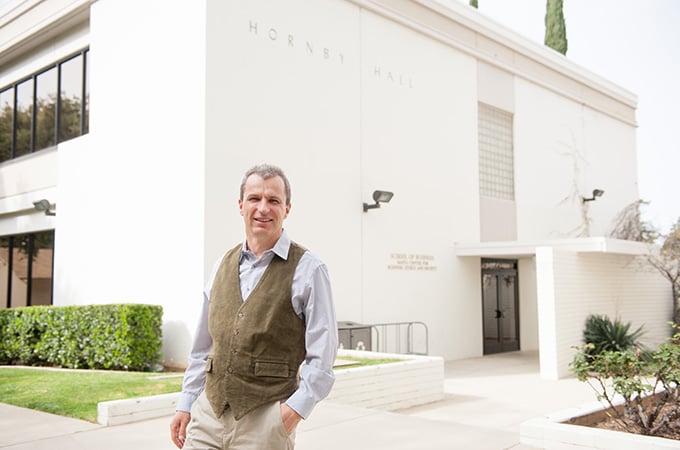When global and spatial business Professor Johannes Moenius collaborated with two other experts to model the effects automation will have on employment in various geographic communities, several of the findings astonished him.
In research led by Dr. Jess Chen, now at government consulting firm MITRE, the team discovered that the places to be hardest hit by automation in coming decades are not in the Rust Belt as previously thought, but in areas with high concentrations of jobs in food preparation, office or administrative support, and sales.
The study found that locations like Las Vegas and the Riverside-San Bernardino area may be most vulnerable to automation in the coming years, with 63 percent of jobs in the Inland Empire predicted to be automatable by 2035.
Moenius, who holds the William R. and S. Sue Johnson Endowed Chair of Spatial Economic Analysis and Regional Planning in the University of Redlands School of Business, says the overall figure of 48 percent of current jobs in the United States being “automatable” over the next 20 years astounded the research team.
In The Atlantic, Moenius described the team’s reaction: “We felt it was really stunning, since we are underestimating the probability of automation. Are we worried about this from a social perspective? Not for tomorrow, but for 10 years from now? It’s quite frankly frightening.”
Moenius says that automation is encroaching on jobs performed by long-haul truck drivers and entry-level workers in industry and office work. “Based on Bureau of Labor statistics projections, looking forward to 2036, the numbers of automatable jobs rises to 56 percent, with the automation of lower-paying jobs being most prevalent,” Moenius says. “Those jobs tend to be highly automatable.”
Many of the people who hold those jobs are women, minorities, and teenagers, he pointed out in an interview with Nevada Public Radio.
The second finding that surprised the team was how much more likely automation was to effect communities located on the periphery of large city centers rather than the city centers themselves. “This raises a whole lot of interesting new research topics,” Moenius says. “What does this mean for health care, for instance?”
The high-profile research has led to interviews by reporters and producers from shows such as PBS NewsHour and news teams from Japan, France, Britain, and beyond, as well as publications closer to home such as the Los Angeles Times. Aside from the team’s unexpected insights delivered by the data, Moenius was positively surprised by how much he learned from questions asked of him during media interviews.
“Working with the press on a high level is a lot of work,” he concluded. “But it was really worthwhile, as it guarantees a high quality of reporting and a high level of visibility for the University of Redlands.”
To learn more about Moenius and his work, see his faculty web page and the Institute for Spatial Economic Analysis.






